Swarup Chandra
Towards Self-Adaptive Metric Learning On the Fly
Apr 03, 2021
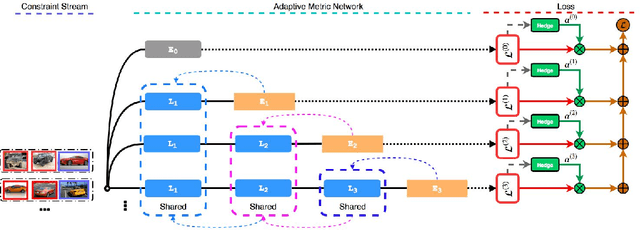
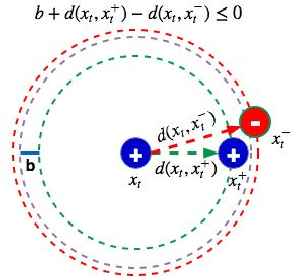

Abstract:Good quality similarity metrics can significantly facilitate the performance of many large-scale, real-world applications. Existing studies have proposed various solutions to learn a Mahalanobis or bilinear metric in an online fashion by either restricting distances between similar (dissimilar) pairs to be smaller (larger) than a given lower (upper) bound or requiring similar instances to be separated from dissimilar instances with a given margin. However, these linear metrics learned by leveraging fixed bounds or margins may not perform well in real-world applications, especially when data distributions are complex. We aim to address the open challenge of "Online Adaptive Metric Learning" (OAML) for learning adaptive metric functions on the fly. Unlike traditional online metric learning methods, OAML is significantly more challenging since the learned metric could be non-linear and the model has to be self-adaptive as more instances are observed. In this paper, we present a new online metric learning framework that attempts to tackle the challenge by learning an ANN-based metric with adaptive model complexity from a stream of constraints. In particular, we propose a novel Adaptive-Bound Triplet Loss (ABTL) to effectively utilize the input constraints and present a novel Adaptive Hedge Update (AHU) method for online updating the model parameters. We empirically validate the effectiveness and efficacy of our framework on various applications such as real-world image classification, facial verification, and image retrieval.
Co-Representation Learning For Classification and Novel Class Detection via Deep Networks
Nov 13, 2018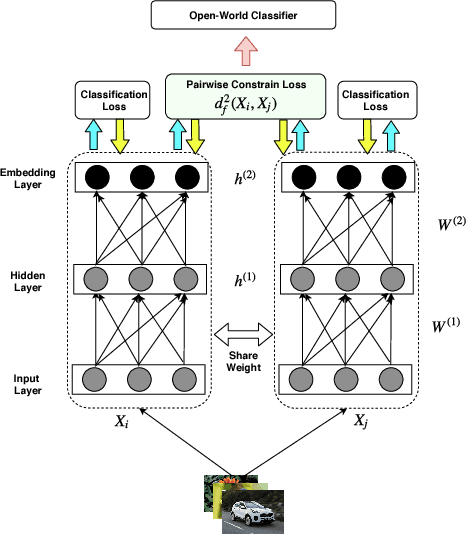
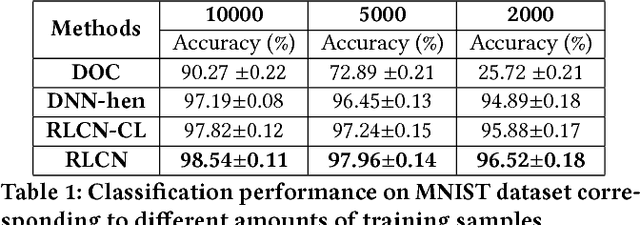


Abstract:Deep Neural Network (DNN) has been largely demonstrated to be effective for closed-world classification problems where the total number of classes are known in advance. However, when the total number of classes that may occur during test time is unknown, DNNs notorious fail, i.e., DNN will make incorrect label prediction on instances from novel or unseen classes. This severely limits its utility in many real-world web applications, particularly when data occurs as a continuous stream. In this paper, we focus on addressing this key challenge by developing a two-channel DNN based co-representation learning framework that not only predicts instances from known classes, but also detects and adapts to the occurrence of novel class instances over time. Concretely, we propose a metric learning method using pairwise-constraint loss (PCL) function to learn a feature representation where intra-class compactness and inter-class separation is achieved. Moreover, we apply the temperature scaling scheme on the softmax function to replace traditional softmax output and design an open-world classifier. Our extensive empirical evaluation on benchmark datasets demonstrates the effectiveness of our framework compared to other competing techniques.
Adaptive Image Stream Classification via Convolutional Neural Network with Intrinsic Similarity Metrics
Sep 27, 2018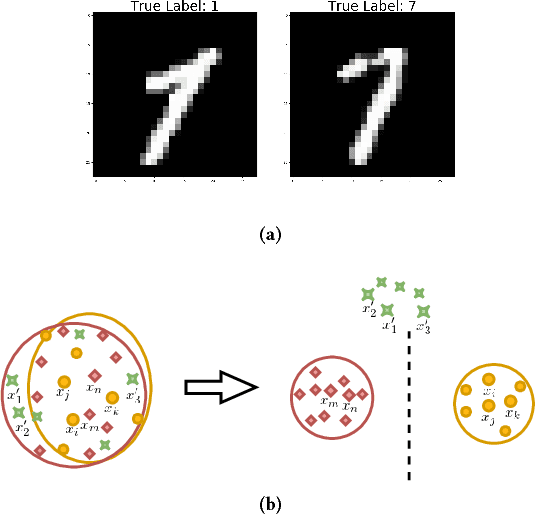

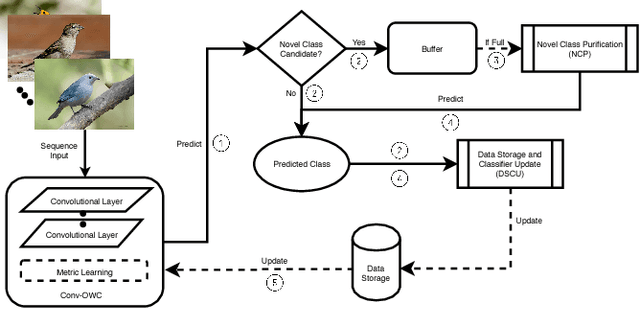

Abstract:When performing data classification over a stream of continuously occurring instances, a key challenge is to develop an open-world classifier that anticipates instances from an unknown class. Studies addressing this problem, typically called novel class detection, have considered classification methods that reactively adapt to such changes along the stream. Importantly, they rely on the property of cohesion and separation among instances in feature space. Instances belonging to the same class are assumed to be closer to each other (cohesion) than those belonging to different classes (separation). Unfortunately, this assumption may not have large support when dealing with high dimensional data such as images. In this paper, we address this key challenge by proposing a semisupervised multi-task learning framework called CSIM which aims to intrinsically search for a latent space suitable for detecting labels of instances from both known and unknown classes. Particularly, we utilize a convolution neural network layer that aids in the learning of a latent feature space suitable for novel class detection. We empirically measure the performance of CSIM over multiple realworld image datasets and demonstrate its superiority by comparing its performance with existing semi-supervised methods.
 Add to Chrome
Add to Chrome Add to Firefox
Add to Firefox Add to Edge
Add to Edge